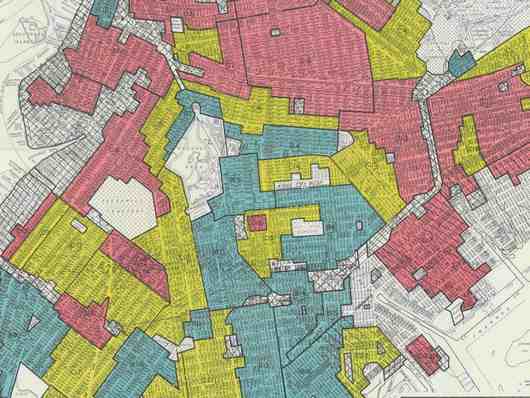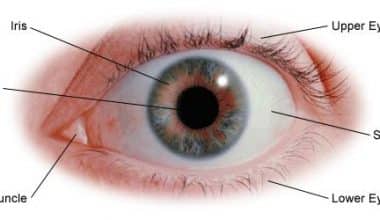Redlining is a discriminatory practice in which financial institutions, such as banks and insurance firms, deny or restrict access to credit in particular geographic areas, often inner-city neighbourhoods. Redlining was a common discriminating practice in the 1990s that prevented black people from acquiring mortgages or insurance. These actions are also very common in real estate and insurance. This is because lenders charged more interest rates to black homebuyers even though they are creditworthy. Although the initial aim for the creation of redlining was to create awareness of high-risk landscapes. It took a different meaning when the blacks were being forced to live in those kinds of areas. You will understand more about the history of redlining as you read on.
What Is Redlining?
Redlining refers to outlining certain geographic areas and marking them as high-risk investments. However, it has grown to imply any form of racial discrimination in housing. These areas usually have a high concentration of Black residents.
How Does Redlining Works?
In the United States, one of the two most popular methods of creating generational wealth is mortgage access. Redlining, however, was a method employed for many years to keep non-White residents out of particular communities. This was to maintain segregation.
Neighbourhoods were carefully assessed based on factors such as:
- Housing cost and quality.
- Accessibility to transportation.
- Distance to amenities like parks.
However, non-housing-related traits including work level, economic class, immigration status, and the racial and ethnic composition of the neighbourhood all had an impact.
The neighbourhoods were categorized using a colour-coding scheme. The most coveted areas were those with green shading. Areas highlighted in red or colour-coded were high-risk and as such mortgages were rarely authorized there. It quickly became apparent that the majority of people living in the areas considered to be the riskiest were Black and Hispanic.
Sociologist John McKnight first popularized the term “redlining” in the 1960s to refer to the discriminatory tactics banks used to discourage investment in communities with a high concentration of African citizens.
What Is Redlining in Real Estate?
In real estate, redlining is the term used to describe a kind of discriminatory lending. It dates back to the 1930s and involves lenders drawing red lines on maps around areas with a high concentration of Black residents in order to deny a mortgage application on the grounds that it was high risk.
Although the practice has been prohibited by laws since the 1960s, regulators will still cite lenders for similar actions if their lending patterns demonstrate discrimination against a particular race. These discriminatory practices include denying financial services (or, in some cases, charging higher rates or fees) despite being creditworthy applicants.
Even after anti-redlining legislation was passed and the CRA underwent multiple revisions. The housing market and financial system are still affected by the effects of redlining.
Residential properties “close inside the boundary of redlined zones” sold for significantly less money than homes “in higher-graded zones” on the other side of the border. Redlining has had a negative impact on real estate property markets for decades.
What Is Redlining in Insurance
In the context of insurance, “redlining” refers to a prohibited practice in which insurance providers refuse to insure people because of their race, colour, or national origin. it is crucial to remember that the Civil Rights Movement sparked “anti-redlining” regulations that continue to have an impact on insurance today.
Racial disparities in the distribution of property insurance exist: racism played a role in the urban property insurance market in the middle of the 20th century. Preventing African Americans from becoming homeowners by a number of governmental and private institutions, including insurance firms and the federal government.
Until the 1960s, insurance companies frequently engaged in a practice known as “redlining” in which they refused to write policies for homes in communities where African Americans resided or charged higher premiums when they did.
Reinsurance is the insurance that insurance firms purchase in order to safeguard themselves against claims that exceed their assets. Throughout the 1960s, both before and after the urban riots, insurance companies were unable to secure reinsurance for urban regions at all or at competitive rates. Private insurance companies’ incentive structures and unofficial steering techniques, which in turn pushed brokers to steer clear of African American communities, worked together to prevent African American neighbourhoods from being insured.
The insurance business recognized the connection between race, ethnicity, and risk; insurance textbooks from the 1950s advised underwriters to consider applicants’ race and ethnicity when assessing their riskiness. Yet, redlining did not fully reflect the risky nature of metropolitan regions or the cost of insuring buildings there.
What Is Redlining a Document?
Redlining a document is the collaborative editing and negotiation process that takes place during the administration of corporate contracts and documents.
In the redlining procedure, one party receives the document and adds or annotates it. The redlined text will show up in a special colour so the other party (or parties) can readily follow changes without having to waste time looking for amendments.
How Do you Do Redlining in a Document?
- Open the file that you want to edit.
- Click the “Review” tab in the toolbar at the top of the screen. The “Track Changes” function is one of the tools for editing and spell-checking on this tab.
- To activate Track Changes, click the “Track Changes” button.
By pressing Control + Shift + E from any tab, you may additionally enable “Track Changes”.
Choose “Track Modifications” from the drop-down menu next to it. - You can select how extensive your change tracking is by using this menu.
Choose “All Markup”. This option highlights new or changed text in red. Moreover, remarks that specify the action taken will show on the right-hand edit bar. - You may select which components of “Track Changes” are from there. To enable or disable each option, click its respective box (disable).
- Any editor comments are displayed in the margins when “Comments” is checked.
- The “Ink” check box displays editor sketches.
- The “Insertions and Deletions” checkbox displays newly add and deleted text.
- You can format adjustments by selecting “Formatting” (e.g., double-spacing or changing the margins).
- Click “New Comment” in the “Comments” portion of the toolbar after selecting the text you want to comment on. You can use this function to annotate the highlighted text. Your comments will show up in the revisions bar on the right.
- Modify the text as you see fit. Microsoft Word will display a vertical red line next to the line of text where the modification was performed whenever you add or remove a character.
- To save your changes, click “Accept”. Your document has been redlined successfully! The red ink and other formatting indicators disappear after clicking “Accept”.
What Is an Example of Redlining?
An example of redlining is the residential map of Chicago. The western part of the city tinted red is an illustration of redlining. Hence, two things may occur if a Black family from that neighbourhood files for a mortgage. They would first be considerably more likely to have to decline their loan request. Alternatively, they might have to pay a higher interest rate than a White family from a neighbourhood like theirs.
What States Are Redlining?
Redlining prohibited generations of families from accumulating equity in their houses or from making modifications to ones that they already own. These unfair actions are a result of a long history of discrimination, which has contributed to the current wealth and homeownership gaps between the black and white populations of the country.
The majority of Black people were in metropolitan regions around the centres of redlined communities. A small number of major cities account for a disproportionately large portion of the population in formerly redlined areas.
The ten cities with the most redlined areas in terms of population are :
- New York,
- Chicago
- Los Angeles
- Philadelphia
- San Francisco
- Boston
- San Diego
- Detroit
- Milwaukee
- Baltimore.
Almost half (49.8%) of the redlined population currently lives in these cities.
What Type of Discrimination is Redlining?
Redlining is racial and colour discrimination. People who live in certain communities do not have the same access to credit as people who live in other communities based on race, colour, or other discriminatory characteristics. Redlining is a kind of illegal lending discrimination utilized predominantly against Black homebuyers.
What Is the Difference between Redlining and Gentrification?
Redlining is the practice of routinely refusing to provide services to people who live in particular areas or neighbourhoods, frequently those that are racially connected.
Gentrification is the process by which wealthy individuals move into a struggling metropolitan area and alter its character.
How Do you Reverse Redlining?
Although redlining excluded African Americans from more desirable loans and mortgages. Reverse redlining “involves targeting inhabitants ‘within specified geographic borders, frequently based on income, race, or ethnicity’ and granting those targeted borrowers loans on unfair terms” and is most common in communities that are predominantly White. Reverse redlining has astounding results.
Who Is Most Affected by Redlining?
Redlining had a disproportionately negative impact on black homebuyers for a number of reasons. First, it was extremely difficult for a Black homebuyer to receive approval for funding in neighbourhoods with high assessment values that were expected to increase over time because the system’s racial foundation favor White homebuyers.
Black homebuyers were forced to turn to undesirable neighbourhoods, some of which had locations close to industrial sites because lenders barred them from these areas. Due to the older age and condition of the homes as well as their proximity to industrial regions, the communities were considered “risky,” which result in Black purchasers paying higher borrowing rates despite lower prices.
What Is One Negative Result of Redlining?
Redlining has been a key contributing element to the income difference between Black and White Americans in several distinct ways:
Redlining is frequently to blame for lower property values and a decline in homeownership in urban areas with a high black population.
In some neighbourhoods of colour, the inability to obtain mortgages has resulted in a rise in abandoned structures, which have turned into hubs for criminal activity.
Black homebuyers did not experience the same return on investment as White People who could afford to invest in housing. Renters are more likely to be Black inhabitants than homeowners. In suburban areas with high property values, it was common for those who could afford homes to be turned down for mortgage loans.
In Conclusion,
Redlining is unlawful and unfair, and it has to be completely eradicated. Everyone should be given an equal opportunity to get credit, regardless of the colour of their skin or the racial makeup of their area. Lenders and creditors are prohibited from treating customers differently based on their race, colour, religion, national origin, sex, ability to pay, or family situation.
There are solutions available to you if you think a lender has discriminated against you or anyone else. Call the Consumer Financial Protection Bureau at (855) 411-2372 to file a complaint online.
FAQs
Where Does the Term "Redlining" Come From?
Sociologist John McKnight first use the term “redlining” in the 1960s to describe how lenders and the federal government would literally draw a red line on a map around the neighbourhoods they would not invest in based solely on demographics. The federal government started racial redlining in the 1930s, designating “risky” districts for federal mortgage lending.
What is the difference between redlining and Blockbusting?
Redlining, which typically targets low-income and minority groups, is the practice of refusing financial loans and services to inhabitants in risky or undesirable neighbourhoods. Blockbusting is a term used to describe a set of tactics used by real estate brokers to cause panic among minority buyers of white-owned homes.
How is redlining legal?
The courts have ruled that redlining on the basis of race is an unlawful practice. It is only done on a banned premise that it is against the FHA. It Although it is not against the law to redline an area base on factors like its proximity to a fault line or a flood plain.
Related Articles
- TAX CREDIT FOR BUYING A HOUSE: First-Time HomeBuyers in 2023
- HOUSING MARKET RECESSION: Impacts of Recession In 2023
- It’s a Tough Market for New Homebuyers & Existing Homeowners
- What Credit Score Do You Need to Buy a House: Best US Practices in 2023
- First-Time Homebuyer Tax Credit: How To Qualify






